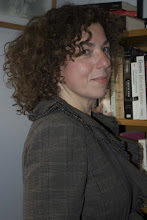In an Elaine Showalter's essay "Representing Ophelia," I came across the following truly weird information: Victorian culture was so fascinated by madwomen that famous hospitals were equipped with photography studios complete with cameras, lights, costumes, and props, so that the most delectable madwomen could be photographed at the doctor's pleasure.
Showalter explains:
"the iconography of the romantic Ophelia had begun to infiltrate reality, to define a style for mad young women seeking to express and communicate their distress. And where the women themselves did not willingly throw themselves into Ophelia-like postures, asylum superintendents, armed with the new technology of photography, imposed the costume, gesture, props, and expression of Ophelia upon them. In England, the camera was introduced to asylum work in the 1850s by Dr. Hugh Welch Diamond, who photographed his female patients at the Surrey Asylum at Bethlem. Diamond was heavily influenced by literary and visual models in his posing of female subjects. His pictures of madwomen, posed in prayer, or decked with Ophelia-like garlands, were copied for Victorian consumption as touched-up lithographs in professional journals.
Reality, psychiatry, and representational convention were even more confused in the photographic records of hysteria produced in the 1870s by Jean-Martin Charcot. Charcot was the first clinician to install a fully equipped photographic atelier in his Paris hospital, Salpetriere, to record the performances of his hysterical stars. Charcot's clinic became, as he said, a 'living theater' of female pathology; his women patients were coached in their performances for the camera, and, under hypnosis, were sometimes instructed to play heroines from Shakespeare. Among them, a fifteen-year-old girl named Augustine was featured in the published volumes called Iconographies in every posture of la grande hysterie. With her white hospital gown and flowing locks, Augustine frequently resembles the reproductions of Ophelia as icon and actress which had been in wide circulation."
How's that for a bizarre interchange of literature, art, and life?
Tuesday, June 1, 2010
Subscribe to:
Post Comments (Atom)

I taught that article recently, and the students liked it a lot. Showalter is great; I have to admire how her foray from the 19th c. into Shakespeare constitutes her bringing Shakespeare into the 19th c.
ReplyDeleteThere are links I keep meaning to post to share with you, in case you would find them interesting or entertaining, and here they are:
ReplyDeletehttp://opinionator.blogs.nytimes.com/2010/06/21/the-anosognosics-dilemma-somethings-wrong-but-youll-never-know-what-it-is-part-2/
http://www.youtube.com/watch?v=jnvgq8STMGM
Sorry, that looks like spam, but I promise it isn't. The youtube clip is about Ophelia! :o)
ReplyDelete